The Philippines is one of Southeast Asia’s most dynamic gaming markets, and its growth is being fueled by a unique blend of cultural traditions, technological adoption, and regulatory developments. With over 118 million people spread across more than 7,000 islands, the nation’s gaming landscape is far from uniform. Instead, gaming preferences—both online and offline—reflect the economic conditions, cultural practices, and lifestyle habits of different regions.
When examining gaming behavior across the country, three key island groups stand out: Luzon, Visayas, and Mindanao. Each presents distinct trends in online gambling, esports, and traditional gaming activities. By understanding these regional differences, we gain a clearer picture of how Filipinos engage with entertainment platforms, what drives their choices, and how operators like Casino Plus and other platforms can adapt their strategies.
Luzon: High Engagement and Urban Focus
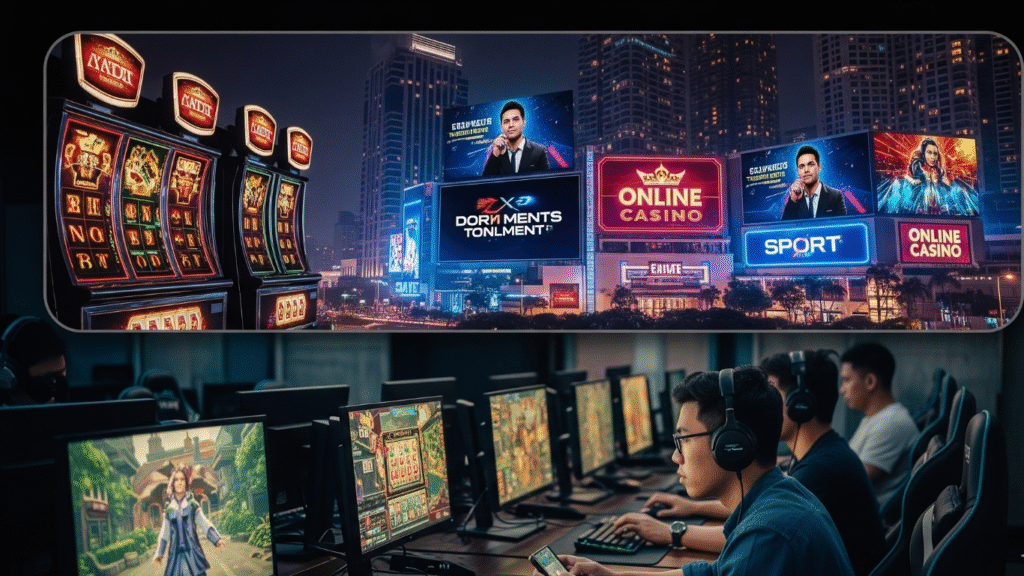
Metro Manila and Urban Dominance
Luzon is the beating heart of the Philippines’ gaming industry, largely because it houses Metro Manila, the nation’s most densely populated and technologically advanced region. Here, 41% of people report current or past engagement with online gambling—the highest in the country. The prevalence of internet access, higher disposable income, and proximity to government-regulated gaming institutions like PAGCOR (Philippine Amusement and Gaming Corporation) all make Luzon a natural leader in gaming activity.
Metro Manila gamers have broad preferences, spanning from online casinos and slot machines to esports tournaments and mobile RPGs. Gaming cafés, esports arenas, and betting platforms are abundant in the capital, reflecting a tech-savvy urban demographic.
Why Luzon Leads in Gaming Adoption
- Technological Infrastructure – Luzon has the most stable and high-speed internet connections, enabling smooth online play.
- Disposable Income – Middle-class and affluent sectors have more money for leisure activities, including online betting and esports.
- Cultural Openness – Urban Filipinos are generally more open to new forms of entertainment, making them quick adopters of digital platforms.
- Stronger Regulation – Since PAGCOR and major gaming companies are based in Metro Manila, oversight and compliance are tighter compared to other regions.
Preferences in Luzon
- Esports and RPGs: DOTA 2, Mobile Legends, and Valorant dominate the competitive scene.
- Casino Play: Online platforms like Casino Plus are popular for slots, poker, and live dealer games.
- Mobile Gaming: With smartphone penetration nearing 80%, casual gaming apps are widely used during daily commutes.
Visayas: Lower Engagement, Cultural Nuance
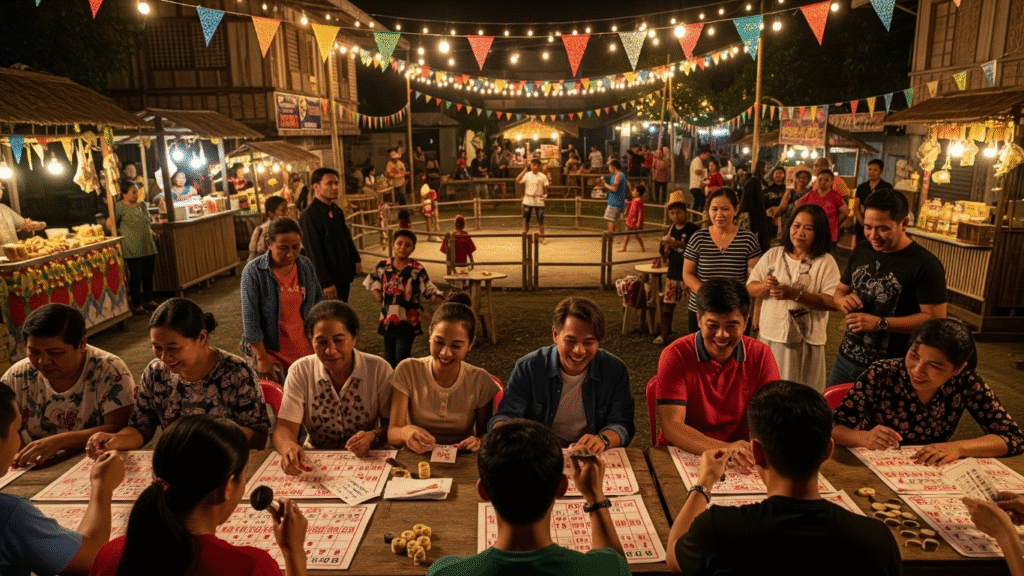
Reluctance Toward Online Gambling
In sharp contrast to Luzon, the Visayas region records the lowest engagement in online gambling, at only around 7% of the population. Moreover, a significant portion of Visayans express little to no interest in trying online betting in the future. This hesitancy is rooted in both socioeconomic and cultural factors.
Economically, the Visayas region has a lower average household income compared to Luzon, limiting discretionary spending for online gaming. Culturally, certain provinces within the Visayas hold conservative views toward gambling, considering it less socially acceptable than other forms of entertainment.
Dominance of Traditional and Social Gambling
Instead of online casinos, many Visayans continue to enjoy community-based games:
- Cockfighting (Sabong) – Still highly popular in rural areas despite regulatory restrictions.
- Bingo and Lotteries – Played during fiestas, church fundraisers, and community events.
- Card Games – Often enjoyed within family gatherings.
These traditional activities highlight how gaming here is viewed as a social and communal activity, rather than an individual pursuit through online platforms.
Limited Digital Gaming Presence
Because most offshore gaming firms and major local operators concentrate in Luzon, Visayans have fewer locally tailored platforms or promotions. This limits exposure and engagement with online casinos, even among younger demographics.
Mindanao: Mixed High Usage and Challenges
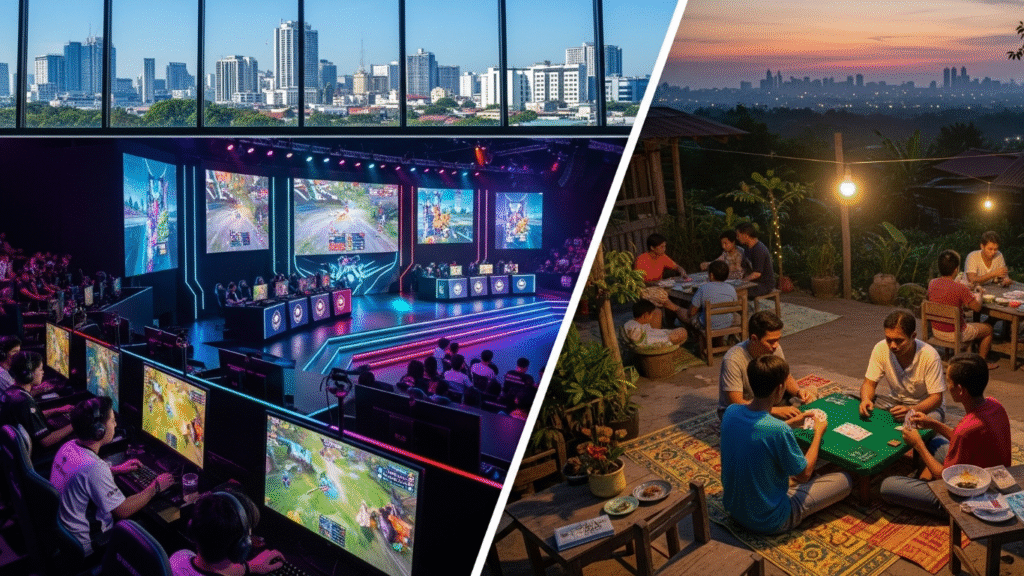
A Complex Gaming Landscape
Mindanao sits in the middle ground between Luzon and Visayas, with 13% of residents reporting online gambling activity. However, the island also shows the highest levels of disinterest, with around 69% of respondents saying they avoid or oppose online gaming. This duality stems from the region’s diverse urban-rural divide and socioeconomic contrasts.
Urban centers like Davao City and Cagayan de Oro are hubs of online gaming, with younger populations actively participating in esports and casino platforms. On the other hand, rural communities are less engaged due to weaker internet infrastructure, religious conservatism, and economic challenges.
Challenges in Mindanao’s Gaming Scene
- Regulatory Enforcement – Illegal and unregulated gaming operations are more common here due to less government oversight.
- Mental Health Concerns – Reports suggest rising gambling addiction issues in certain areas, sparking calls for stricter safeguards.
- Infrastructure Limitations – Internet speed and reliability remain inconsistent, limiting seamless online gameplay.
Preferences in Mindanao
- Esports Growth – Mobile Legends, PUBG Mobile, and Call of Duty are extremely popular among youth.
- Online Casinos – Platforms like Casino Plus are gaining traction in cities, though less widespread in rural areas.
- Traditional Games – Similar to Visayas, cockfighting and card games remain part of cultural traditions.
Cross-Regional Observations
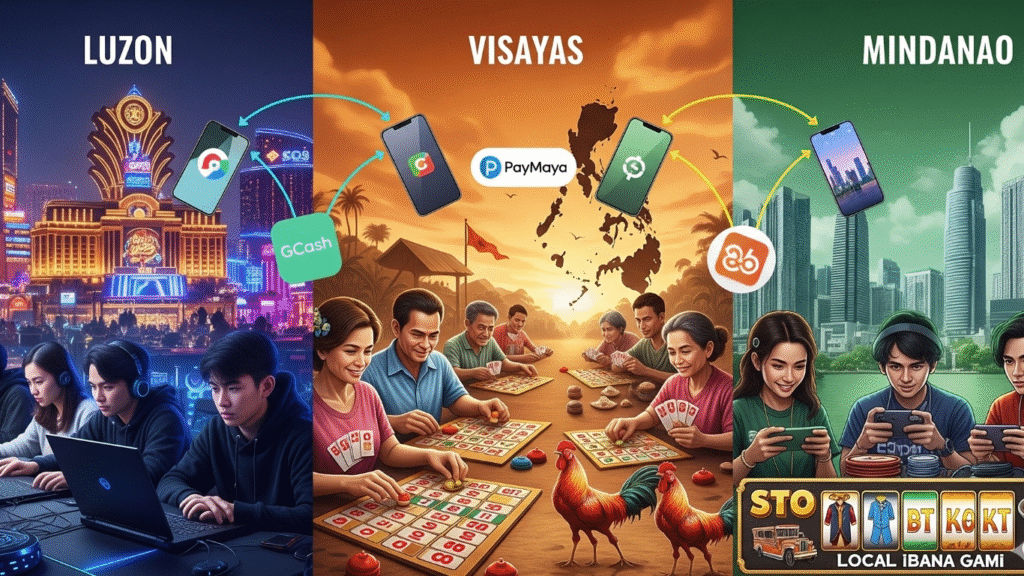
Despite differences, several unifying patterns emerge across Luzon, Visayas, and Mindanao:
1. Mobile Gaming is King
Across all three island groups, mobile gaming dominates due to widespread smartphone access. Even in areas with slower internet, lightweight games and mobile casino apps thrive.
2. Payment Preferences Vary by Age and Region
- Younger Gamers: Often use cash-based e-wallets like GCash or PayMaya.
- Older Players: Prefer credit or debit cards, though adoption is lower outside Luzon.
3. Culturally Tailored Games Gain Popularity
Games that incorporate local themes, languages, or traditions resonate more with Filipino players. For example, platforms are experimenting with Tagalog and Cebuano language options, as well as locally themed slot games.
4. Regulation and Enforcement are Uneven
While Luzon enjoys strong government oversight, both Visayas and Mindanao struggle with illegal operators, highlighting the need for more consistent regulation nationwide.
The Role of Casino Plus and Other Platforms
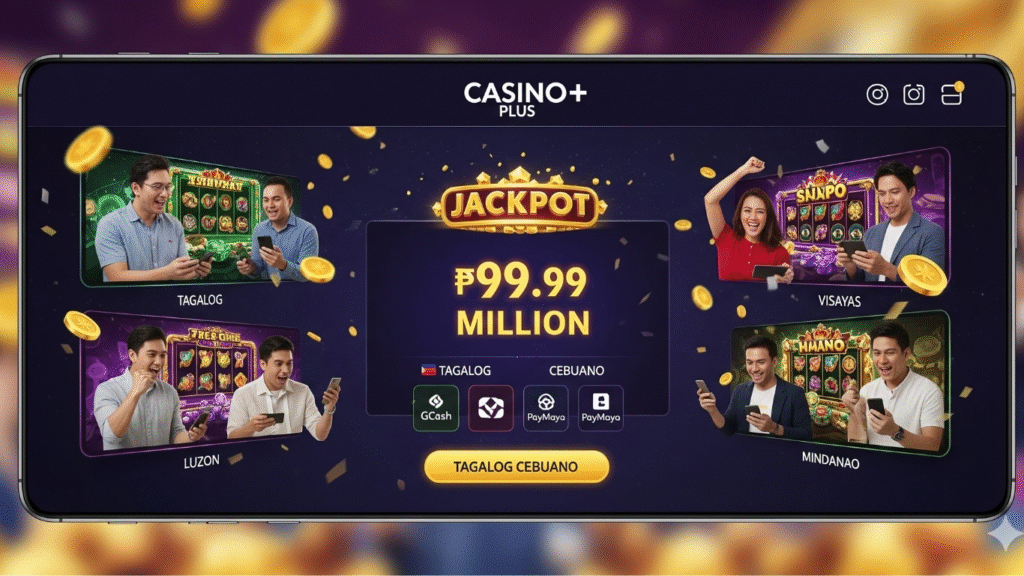
Casino Plus has been instrumental in shaping the online casino landscape in the Philippines. In 2024 alone, the platform reportedly paid out over ₱2 billion in jackpots, including a record-breaking ₱99.99 million win.
For Luzon players, Casino Plus serves as a natural fit for the urban lifestyle. In Mindanao, it’s increasingly popular in major cities with reliable internet connectivity. However, in Visayas, operators still face challenges in building trust and overcoming cultural resistance.
By offering region-specific promotions, supporting e-wallet payments, and integrating local language features, platforms like Casino Plus can bridge the gap and cater to diverse preferences across the islands.
Conclusion
The Philippines’ gaming industry is not a one-size-fits-all market. Luzon leads with high adoption and tech-savvy users, Visayas prefers traditional and social gambling activities over online casinos, and Mindanao reflects a mix of growing digital engagement alongside regulatory and infrastructural challenges.
Understanding these regional differences is crucial for operators, regulators, and even players who want to maximize their experiences. The future of gaming in the Philippines will likely be defined by platforms’ ability to adapt to these cultural and economic nuances, ensuring responsible, enjoyable, and accessible entertainment for everyone.


